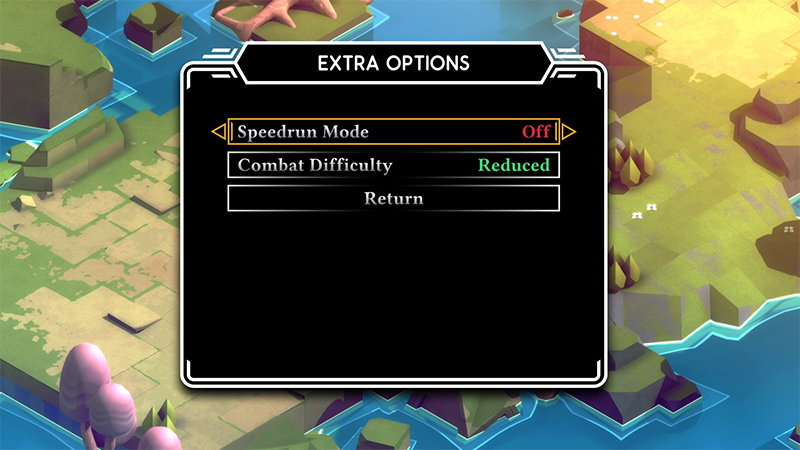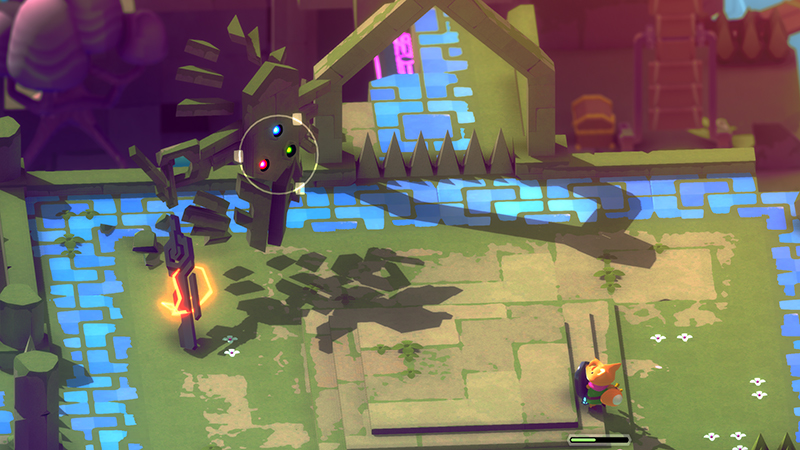Tunic is an incredibly charming game from the get-go. The cute little fox protagonist and vibrant art style are designed to be instantly inviting. However, the gameplay itself is quite the kick in the teeth. Foes are ruthless and strict stamina management becomes essential for survival, which is seemingly at odds with its vivid environments as well as its focus on exploration. Tunic’s newest ports come with an extra option — an easier difficulty setting just for the combat — and this finally opens up the game and makes it a more consistent experience.
Tunic, in its original state, is not as consistent as it should be. For as intriguing as it was to wander its lush world and attempt to uncover its many mysteries, it was infuriating to be pushed into so many combat encounters along the way. It was like being dropped into an alien museum and being forced to deal with a couple of wild boars every few exhibits. So many of the game’s areas, especially early on, are littered with a comical amount of tough foes that artificially made combat a priority.
The problem is that Tunic’s combat isn’t strong enough to be such a prevalent gameplay pillar because it’s just not deep or satisfying as it should be. Its simple, stumpy sword swipes, magic spells, and slow parry can’t bear the load the game places on it, especially given its stringent stamina system and how encounters often tediously throw entirely too many enemies in one small area. Running away also isn’t always the best escape, given how accurate some of the ranged foes are and how vigorously they chase the player as if that innocent little fox owes them a decade’s worth of alimony.

The new “Reduced” option simply halves the amount of damage the player takes and doesn’t seem to touch the stamina or mana meters or how lethal player attacks are. Being twice as durable lets players explore more freely, which is a better balance. Wandering around is the more interesting part of the game and where its best parts, like its smooth soundtrack and art style, shine. Finding manual pages, deciphering what they mean, and solving its wordless puzzles are substantially more engrossing than swatting away three crocodiles while simultaneously dealing with one annoyingly accurate turret.
The Reduced setting still doesn’t make the game a complete cakewalk or even solve all of its problems since it doesn’t magically make the swordplay more complex, its enemies less cartoonishly persistent, or the stamina meter any less punitive. It has fundamental shortcomings that a mere toggle doesn’t completely fix, but it does (fittingly) reduce how irritating those sore spots can be.

Tunic already had some welcome accessibility options, but they were a bit extreme, as one switches off stamina management while the other made players invincible. Throwing out challenge entirely is not always the answer and ostracizes those who just want a little bit of help. Invincibility also completely nullifies the combat, making it odd that one of the only difficulty options is the nuclear one. Reduced mode is a better compromise between the default and those two aforementioned modes, even if it is just one more setting.
Many games like Nioh or God of War on its hardest setting have flexible enough combat to warrant such difficulty, but Tunic is not one of them. It’s also not like a game like Bloodborne where its brutal combat is meant to reflect its harsh world. The Reduced setting sadly doesn’t fully alleviate its mechanical problems, but it does address them and improve the overall experience in ways that highlight its puzzle and mystery-oriented strengths. It’s dangerous to go alone, but sometimes the danger isn’t the interesting part.










